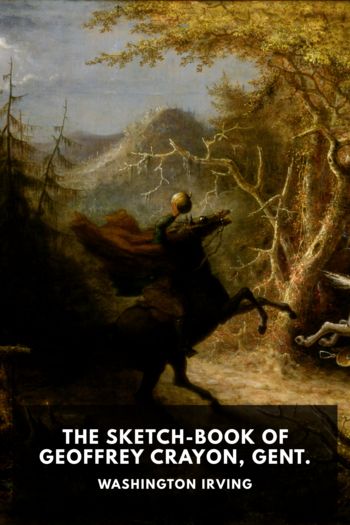Loverly:The Life and Times of My Fair Lady (Broadway Legacies), McHugh, Dominic [fantasy books to read TXT] 📗

Book online «Loverly:The Life and Times of My Fair Lady (Broadway Legacies), McHugh, Dominic [fantasy books to read TXT] 📗». Author McHugh, Dominic
In summary, the number of English-language versions of Pygmalion is large, even before we take into consideration several foreign film versions that preceded the 1938 British movie. This textual minefield clarifies one of the reasons why turning the play into a musical was so difficult: Which version should be adapted? The original play, in its five-act 1914 version, is quite simple in what it depicts. Act 1 shows Eliza in Covent Garden; she meets Higgins, who bets Colonel Pickering that in three months he could pass her off as “a duchess at an ambassador’s garden party.”20 Higgins takes pity on Eliza and gives her a handful of change. In act 2, Eliza arrives at Higgins’s house and requests elocution lessons; Pickering asks Higgins to make good his bet, and they decide to teach her. Eliza’s dustman father arrives, demanding his rights, and “sells” her for £5. Act 3 shows a tea party at Mrs. Higgins’s house, where Eliza disgraces herself with embarrassing stories about her family. Nonetheless, Higgins decides to persevere, and at the start of act 4 we learn that Eliza’s formal debut into society (which takes place during the interval) has been a success. However, Higgins credits solely himself for this achievement and ignores Eliza while basking in Pickering’s congratulations. Higgins and Eliza quarrel, and she leaves. Act 5 brings the story to a conclusion, at Mrs. Higgins’s house. Higgins and Pickering come to report Eliza’s disappearance, only to discover she has taken refuge with Mrs. Higgins. Doolittle arrives and announces he is to be married, having been left a legacy as a result of being recommended as a lecturer by Higgins on a whim. After a final confrontation between Eliza and Higgins, Eliza sets out for the wedding with Pickering, Doolittle, Freddy, and Mrs. Higgins, leaving Higgins behind.
What’s striking about this synopsis is that there are no elocution lessons, and we are not allowed to witness Eliza’s triumph. In the original conception, Shaw’s emphases are on the role of woman in society and the way in which education could facilitate social mobility. For the 1938 film adaptation, produced by Gabriel Pascal and co-directed by Anthony Asquith and Leslie Howard, Shaw made some additions and changes.21 These include a scene at the end of act 1 in which Eliza hires a taxi with some of the money Higgins has given to her, to make the short journey home; a scene in act 2 in which Mrs. Pearce gives her a bath; an example of Eliza’s lessons; and a new scene between Eliza and Freddy in act 4, when the former leaves Higgins’s house in anger and hurt. The film also introduces Eliza’s return to Covent Garden after her argument with Higgins. But without Shaw’s knowledge, Pascal and the directors “secretly shot a different ending to Shaw’s screenplay,” and withheld it from him until the preview for the press “two days before the premiere, too late for him to do anything about it.”22 With the exception of this unauthorized ending, Shaw subsumed many of the new scenes from the film into the play script for a definitive edition in 1941, which has been the source used for most subsequent editions of the work.
Lerner and Loewe saw the Pascal film in early 1952, and its screenplay was ultimately the primary basis for the script of Fair Lady. But before deciding to adhere to much of Shaw’s structure, Lerner and Loewe considered a more liberal adaptation. There is evidence of this in the correspondence partially discussed in chapters 1 and 2, as well as four outlines (see tables 3.1–3.5) of the show roughly dating from 1952 (Outlines 1 and 2), 1954 (Outline 3) and 1955 (Outline 4). These documents reveal how Lerner and Loewe initially sought to impose musical theater conventions on Pygmalion and were willing to tear the text apart to make it work as a Broadway show. Set pieces, locations, and the potential for the lyric moment (i.e., song and dance) were the priorities at this point, rather than the surface of the spoken text.
There is a marked difference in attitude between literary scholars and musicologists when discussing the nature of the adaptation. Typical of Shaw scholars is Paul Bauschatz, who suggests that My Fair Lady is both a corruption and an inept treatment of Pygmalion. He says it “works badly” and “is structurally flawed.”23 Conversely, musicologists such as Joseph Swain tend to assume that the majority of the dialogue was simply lifted from Shaw’s text. Swain says that apart from the musical’s lessons montage, Shaw’s script “is followed quite faithfully” by Lerner.24 In fact, the





Comments (0)